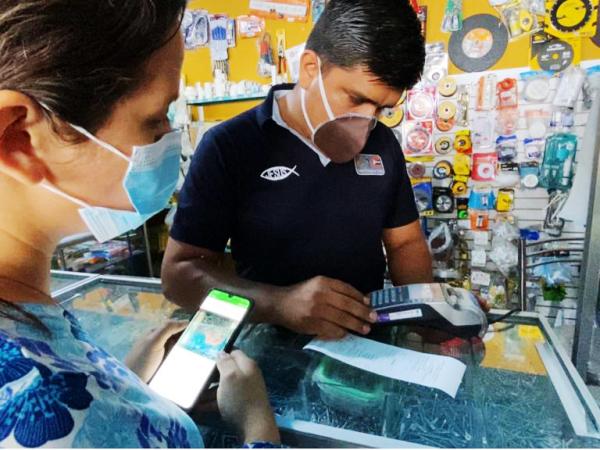As time goes by and technology gains more ground in the different scenarios of the financial world, old practices such as using checkbooks, cheques or having to wait in long lines at the bank, became a thing of the past, while cards or plastic money They see how they are close to disappearing, since now everything is being managed from the cell phone.
The need to do everything right now, the eagerness with which society moves today and the desire to have everything at hand; are some of the factors that currently influence the transformation and consolidation of technology, in a reality in which the banks themselves have already realized this and decided to adapt.
rmation: Petro ‘compared hydroelectric companies with drug trafficking’ and unions responded
According to a report by Ernst & Young, 76% of Colombians use technology services for financial procedures, which is the highest adoption rate in Latin America, placing the financial industry in a complex situation, since users search for solutions through their cell phones more frequently and avoid visiting a physical location or office.
Mario Cruz Aguilar, CEO and founder of Kontigo, adds that from 2008 to 2022, Financial inclusion has increased from 55% to more than 90% of Colombian adults with a banking product, demonstrating that technology significantly drives financial inclusion.
Banco Agrario’s first digital payment ecosystem was inaugurated in the Tolima district of Santiago Pérez.
“The banking, microfinance, cooperative and fintech sectors have been forced to evolve and innovate digitally at an accelerated pace, bringing with them some obstacles for those who want to be part of this new wave. Today there are several challenges to democratizing access to the placement of these using advanced technology and you can start with at least three,” said this expert.
Less displacement
For Cruz Aguilar, it is necessary to start by understanding that people no longer like the same things they did years ago, starting with the long lines and having to go to a physical bank branch every time they need something. In this sense, he suggests that now it is the financial institutions that must look for ways to approach users.
For reading: Tolls, income tax returns and other payments you should take into account starting in August
“A recent study conducted by Inmark determined that in Colombia Small and medium-sized enterprises (SMEs) are increasingly opting to use innovative payment methods when making transactions with their clients, with mobile banking being the most widely used mechanism, achieving a penetration of 45.5%,” he said.
For this reason, from their perspective, credit issuing companies must adapt and offer solutions that eliminate the need for physical visits. This includes not only the digitalization of processes, but also the simplification of paperwork.

Colombian pesos
iStock
Good infrastructure
Secondly, Kontigo’s CEO highlights that with digitalisation, access to data has become a double-edged sword, as on the one hand, it allows credit issuing companies to carry out more accurate risk assessments and offer more personalised products. On the other hand, it poses challenges in terms of data protection and privacy, which must be given top priority.
“We need to have state-of-the-art infrastructure, including advanced data storage and processing systems, data analysis platforms and cutting-edge cybersecurity solutions,” he stressed.
You may be interested in: Energy policy: why there will be a gas deficit for the coming years, according to Cree
That said, he warns that to address this problem, we must become an ally for both financial institutions and citizens, through alternatives such as studying the financial profile of users and reviewing their credit history; all this with the aim of making informed decisions.
Trust
Last but not least, Mario Cruz argues that since this is a purely virtual service, users need to feel secure when providing their personal data to avoid being exposed to potential fraud. In this way, a lack of trust can lead to the loss of customers and negatively affect the company’s reputation.

Indicators
PHOTO: iStock
“These three challenges mentioned represent both challenges and opportunities for credit issuing companies. The key is how they manage to adapt and evolve in this digital environment to continue offering a quality service and gain the trust of their customers. A win-win system for both users who require credit, as well as for cooperatives that want to save time in data analysis and access a greater number of clients,” he concluded.
















Add Comment